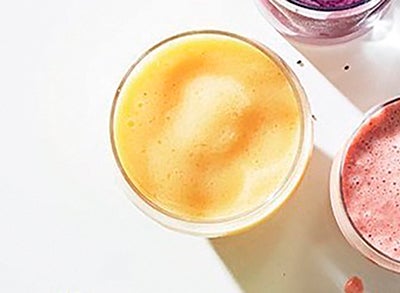Whey cool ways to refuel
Published 6:50 am Wednesday, June 3, 2020
|
Getting your Trinity Audio player ready...
|
By Jena DeMoss
Corporate Hy-Vee Dietitian
Protein shakes are all the rage these days. You cannot walk into a gym without seeing dozens of people gulping down chocolate, vanilla or fruit-flavored protein drinks. Protein is paramount to recovering from a grueling workout and building new muscle mass. At the end of an intense workout, our muscle cells are like sponges that want to absorb nutrients and kick-start the recovery process. Whey protein is a common choice to support recovery because of its incredible range of essential amino acids and its muscle-building properties. Whey is the main protein found in milk and is the liquid part of milk that separates during cheese production. Whey protein supports muscle recovery in four ways:
Building blocks: Whey is a complete protein, which means it contains all the essential amino acids our bodies cannot make on their own. These amino acids serve as the building blocks for new muscle.
Hormonal impact: Whey causes the release of insulin, a key muscle-building hormone that helps drive nutrients into our cells. This spike in insulin helps feed our muscle cells and fuel recovery after a workout.
Leucine content: Whey is rich in this branched chain amino acid known to stimulate muscle protein synthesis (aka muscle building) at the molecular level. Leucine has a much greater impact on stimulating protein synthesis compared to any other amino acid.
Digestion rate: Whey protein is filtered from milk and is commonly consumed in a liquid form. This in turn speeds up the digestion rate and the rate at which the protein can be utilized. To optimize the muscle recovery process, aim for at least 20 grams of protein within about 60 minutes of training.
When it comes to whey, not all powders are created equal and it all has to do with the processing of the milk. “Whey concentrate” is less filtered, leaving some lactose and fat from the milk. The additional fat content creates a thicker shake with a richer flavor but contains the lowest amount of protein per scoop. Whey concentrate is a good fit for recreational athletes or to simply boost the protein content of foods such as smoothies and baked goods. Alternatively, “whey isolate” is filtered to a greater extent to remove excess lactose and milk solids, perfect for those with lactose intolerance or problems with dairy. This also creates a finer powder with more protein per scoop. Whey isolate may be a better choice for competitive athletes and for body composition goals because of its superior protein content and absorption rate.

Whey can help give you that protein punch you need. Photo provided
You do not have to be an athlete or workout warrior to reap the benefits of whey protein. Protein is by far the most satiating macronutrient, and incorporating a scoop of whey protein with a meal or snack will help you feel full and satisfied. This in turn can help you stay focused and fight cravings for less healthful foods. Try mixing a scoop with frozen fruit and yogurt for a balanced smoothie, or sneak a scoop of vanilla whey into your favorite pancake batter for a protein-rich breakfast treat.
The information is not intended as medical advice. Please consult a medical professional for individual advice.



